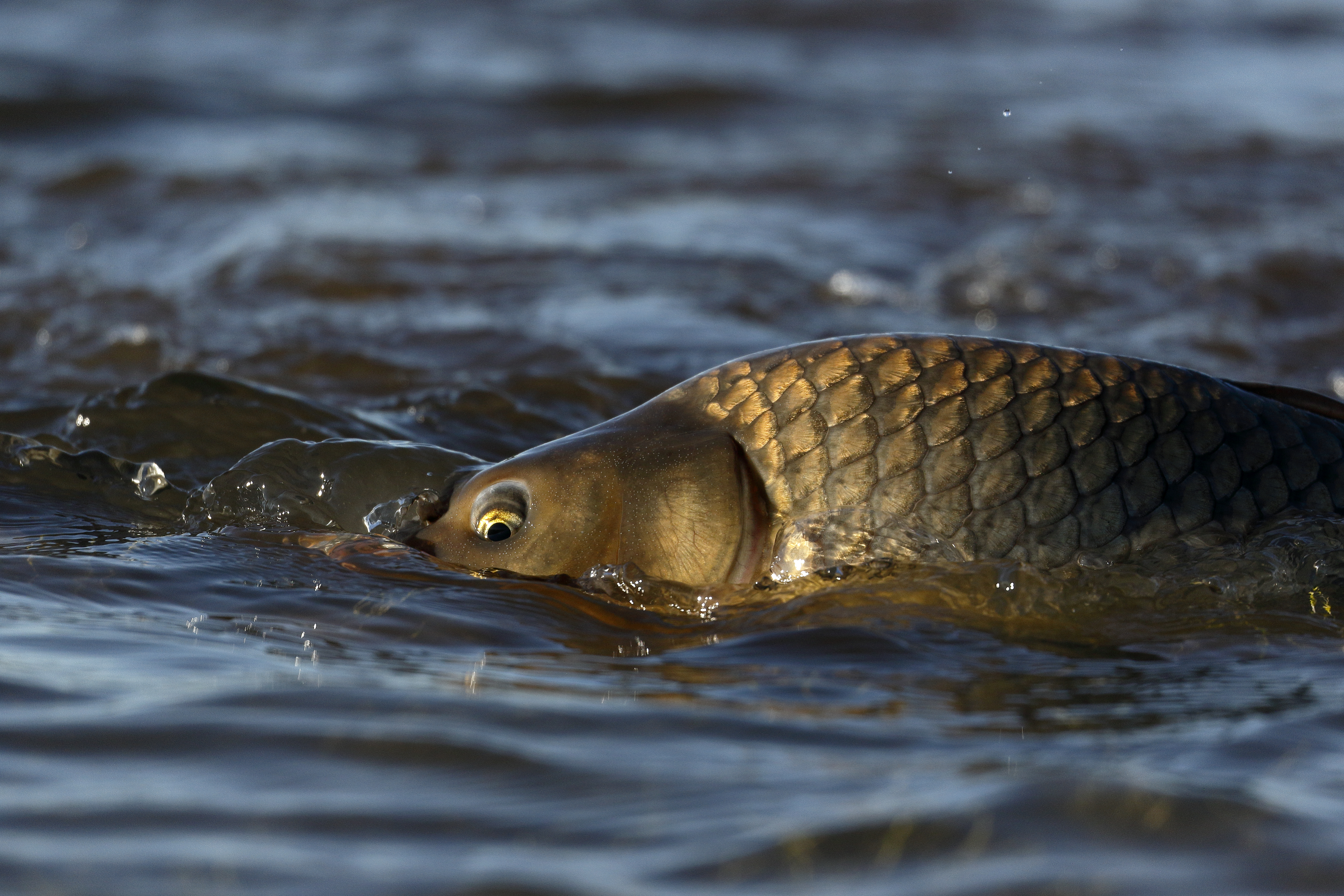Design of a controlled trial before releasing the carp virus

Why is a controlled trial necessary?
A field-based trial release of the carp virus (in an enclosed waterway) will test the efficacy of the virus in naturalised settings by mimicking carp densities found in the wild. This will provide valuable insight about carp mortality rates prior to a broader release of the virus, if approved by the Federal Government. To date, current carp mortality estimates from the virus, range from 30 to 80% and, are based on modelling and small-scale laboratory exposure trials. Having a clearer understanding of carp mortality rates is critical to determining what we can expect from the release of the virus at carp ‘hot spots’ and, whether a carp cleanup operation is required. The trial controlled release of the virus is a stepwise and precautionary approach.
What will the project to design the trial deliver?
The Arthur Rylah Institute for Environmental Research, in partnership with Charles Sturt University and the Wedge Group, will prepare the experimental design for the trial, identify a preferred site, assess site risks and biosecurity controls, and prepare engineering concept designs and costings for the site. The project will also identify fit-for-purpose regulatory approvals requirements.
How will the preferred trial site be selected?
The preferred site will be selected based on the requirements of the experimental design and biosecurity controls. Other site selection criteria will include access to a water storage not connected to any other waterway, water and power supply infrastructure, road access and other logistical requirements.
What biosecurity controls will be implemented to prevent escape of the carp virus?
A rigorous assessment of biosecurity risks and controls will be prepared for the preferred site. The established scientific evidence shows that the carp herpes virus is transferred via ‘skin-to-skin’, or skin tissue contact between carp. As such, the preferred site is likely to require enclosure netting to prevent cormorants and pests taking infected carp, on-site waste treatment, people and vehicle disinfection facilities and security fencing and 24/7 on-site security monitoring.
How will disposal of wastewater and dead carp be managed at the trial site
It is likely water will be treated and/or reused to ensure no water leaves the site. All dead carp will be disposed of either on-site using burial, incineration or other approved methods or offsite at an approved waste disposal site. These requirements will be identified via the assessment of risks and controls, and regulatory approvals process.
Who is overseeing the design of the trial?
The Commonwealth Department of Agriculture, Fisheries and Forestry’s has convened a Carp virus working group comprising the Victorian, New South Wales, South Australian and Queensland fisheries agencies and Biosecurity Australia. The working group will oversee the investigations and planning for the release of the carp virus. The Agriculture and Fisheries Minister for all Commonwealth, state and territory governments have also been briefed on the proposal to develop the carp virus trial. The VFA has established a technical group in collaboration with NSW DPI – Fisheries, with participants from ARI, CSU, Grampians Wimmera Mallee Water Authority and the Wimmera Catchment Management Authority to guide the design of the carp virus trial.
When is the trial expected to start?
The current design phase for the project is expected to take around six months. The trial site is expected to be ready in 2026, with the experiments start in Spring 2026 and through to Autumn 2027, subject to federal government approval.
What approvals are needed before the trial can commence?
The carp virus controlled trial will require the approval by the Commonwealth Government before it can proceed. The infrastructure, personnel and other operating requirements will be identified and costed as part of the current project to design the trial.
For more information, go to:
Download this FAQ sheet:
- Design of a controlled trial before releasing the carp virus - FAQs
 [PDF File - 442.0 KB]
[PDF File - 442.0 KB] - Design of a controlled trial before releasing the carp virus - FAQs
 [MS Word Document - 3.6 MB]
[MS Word Document - 3.6 MB]
This fact sheet has been prepared by the VFA to provide brief and general answers to common questions raised by recreational fishing stakeholders on social media and at fishing related engagement forums. Our summary responses are drawn from detailed and lengthy published scientific investigations completed under the National Carp Control Plan. We acknowledge our responses fall short of a detailed explanation and encourage those interested in finding out more about the work, to go to the source documents for more detail.
